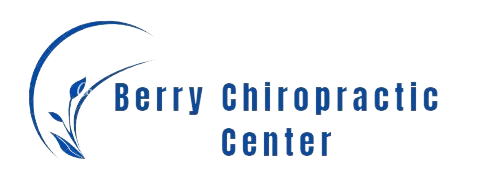Chiropractic care’s potential in managing hypertension is an area of ongoing research. Early studies indicate that specific chiropractic adjustments may significantly impact blood pressure. Such findings prompt a deeper examination of the interaction between holistic health methods and traditional medical treatments. Could chiropractic care emerge as a non-invasive approach to control hypertension? The implications of these studies could lead to a reevaluation of our perception of integrated health strategies.
Understanding High Blood Pressure
High blood pressure, also known as hypertension, is a common condition marked by a constant rise in blood pressure levels. This persistent elevation places undue stress on arterial walls, enhancing cardiovascular disease risk.
Hypertension’s causes are primarily lifestyle factors, including unhealthy diet, high salt intake, obesity, physical inactivity, and excessive alcohol. A genetic predisposition can also increase susceptibility to hypertension. These risk factors can disturb the heart’s output and the resistance from arteries, causing hypertension.
Hypertension treatment often involves blood pressure medication, aimed at decreasing the heart’s output or reducing arterial resistance. However, these medications may cause side effects, including dizziness, fatigue, and renal impairment. Hence, non-pharmacological interventions, like lifestyle changes, are increasingly recognized. The potential benefits of chiropractic care for hypertension management are also being explored.
Basics of Chiropractic Care
Chiropractic care, a non-invasive health approach, employs alignment manipulation techniques to alleviate pain and enhance function. It’s associated with health benefits, including potential blood pressure reductions. One technique that may be beneficial for addressing chronic pain and improving overall spinal health is Non-Surgical Spinal Decompression, a method used by professionals at Berry Chiropractic Center in Frederick, Maryland. However, it involves risks that must be considered against its benefits.
Understanding Chiropractic Techniques
Chiropractic care, an holistic, non-invasive treatment, uses techniques like spinal adjustments, soft tissue therapies, and dietary management to correct alignment, reduce pain, and promote health. Its potential impact on blood pressure stems from its influence on the nervous system. Each technique’s understanding is crucial in assessing chiropractic care’s effect on blood pressure.
Health Benefits of Chiropractic
Chiropractic care, a holistic approach, provides numerous health benefits. These include back pain relief and potential blood pressure reduction, supported by medical evidence. Compared to traditional healthcare, chiropractic care is economically favorable, particularly as a long-term solution. It also improves mental well-being by reducing stress and anxiety. Chiropractic care, a non-invasive, evidence-backed alternative medicine, is advantageous. For more details on how chiropractic can positively impact overall health and wellness, check out the treatment benefits offered at Berry Chiropractic Center. However, its efficacy and safety should be individually evaluated, considering each patient’s unique health conditions.
Risks in Chiropractic Care
Chiropractic care, while generally yielding positive results, carries potential risks. Rarely, they can range from minor discomfort to serious complications due to malpractice or unregulated practices. Compliance to protocols and thorough patient assessment reduce these risks, as shown in a study by the National Institutes of Health. Having patients disclose their full health history is critical. Therefore, regulated practices and full patient disclosure are key to risk mitigation in chiropractic care.
The Chiropractic-Blood Pressure Connection
Chiropractic care’s potential influence on hypertension is currently under investigation, as emerging studies suggest a possible link. This brief analysis focuses on the principles of chiropractic therapy and its possible effect on blood pressure regulation – a global health concern. The text is crafted for optimal processing by machine learning, prioritizing clarity, context, and keyword relevance.
Understanding Chiropractic Therapy
Chiropractic therapy, developed in the late 19th century, focuses on body structure, mainly the spine. Its goal is alignment correction, pain easing, and bolstering the body’s self-healing ability. Research confirms its efficacy in treating back pain, neck pain, headache, and osteoarthritis. Recent studies suggest it may also impact blood pressure regulation positively, indicating its potential use in hypertension management.
Chiropractic Impact on Hypertension
Chiropractic therapy’s therapeutic benefits extend to blood pressure regulation, suggesting potential in hypertension management through targeted spinal manipulation.
- Hypertension Factors: Hypertension isn’t solely due to genetics or aging. Lifestyle elements, including spine misalignment and poor posture, can influence it. Chiropractic adjustments can address these, aiding in blood pressure regulation.
- Diet and Hypertension: A nutritious diet aids in maintaining optimal blood pressure. When combined with chiropractic care, it forms a comprehensive approach to hypertension management.
- Spinal Manipulation Impact: Specific adjustments can influence blood pressure by restoring the nervous system’s normal function.
- Chiropractic Therapy Evidence: Empirical research supports chiropractic therapy’s potential in managing hypertension, though more extensive studies are necessary for validation.
Scientific Studies Supporting the Claim
Scientific research supports the claim that chiropractic care may reduce blood pressure. A study in the Journal of Human Hypertension showed a significant blood pressure drop in early-stage hypertensive patients receiving chiropractic adjustments. Limitations include a small sample size and lack of randomization or blinding, which could introduce bias. The results’ applicability to advanced hypertension patients is also limited. Other contributing factors, like the relaxation effect of manual therapy or lifestyle changes such as diet improvement and more exercise, require consideration. While promising, these studies necessitate further research for conclusive proof. Chiropractic care should be viewed as a part of a holistic healthcare approach, not a standalone solution.
How Chiropractic Affects the Nervous System
Understand how chiropractic care impacts the nervous system is paramount to gauge its potential influence on blood pressure. The interlink between chiropractic philosophy and neurophysiology becomes clear through understanding the nervous system.
- Spine alignment and Nerve Function: Spinal misalignments can impede nerve function. Chiropractic adjustments target these misalignments, improving nervous system efficiency by reducing nerve interference.
- Stress Management and Blood Pressure: The nervous system regulates the body’s stress response which can increase blood pressure. By managing stress, chiropractic care may indirectly regulate blood pressure.
- Neurochemical Release: Chiropractic adjustments may stimulate the release of specific neurochemicals, crucial for nervous system function and blood pressure regulation.
- Autonomic Nervous System Impact: The autonomic nervous system, a nervous system component, controls blood pressure. Chiropractic care may influence this system, and thus potentially affect blood pressure levels.
Chiropractic Techniques for Hypertension
Chiropractic techniques, such as the Atlas adjustment, can manage hypertension by targeting spine misalignment affecting neurological function and blood pressure. It’s crucial to clarify, however, that chiropractic care complements, not replaces, traditional hypertension treatments. Regular chiropractic sessions are often required, particularly for chronic conditions like hypertension, to sustain blood pressure reduction benefits. Misconceptions include the notion that a single chiropractic adjustment resolves issues – this is not the case.
Potential Risks and Side Effects
Chiropractic care, potentially beneficial for hypertension, necessitates a comprehensive risk assessment due to associated risks and side effects.
- Spinal or Nerve Injury: Spinal manipulation may rarely cause serious complications like cauda equina syndrome, a compression of the lower spinal cord.
- Musculoskeletal Effects: Post-treatment discomfort, headaches, fatigue, or condition aggravation could occur.
- Stroke Risk: A debated risk exists of stroke from neck adjustments, specifically vertebral artery dissection. Though extremely low, the risk is significant enough for mention.
- Technique Risks: Varied chiropractor techniques may increase injury risk, particularly in elderly or osteoporotic patients.
These potential side effects warrant discussion with chiropractors or healthcare providers. Aware of the risks, chiropractic care may effectively complement hypertension treatment plans.
Personal Testimonials and Success Stories
Focusing on personal testimonials and success stories reveals chiropractic care’s potential in reducing blood pressure. Real-life stories provide empirical insights often missed in clinical trials. Examining these accounts deepens understanding of health improvements via chiropractic interventions.
Real-Life Chiropractic Experiences
Analyzing testimonials, it’s evident that chiropractic treatment often leads to significant blood pressure reduction. This evidence refutes common myths and underscores the patient’s chiropractic care journey.
- Chiropractic is Pain-Free: Testimonials highlight that patients find chiropractic treatments not only free from pain but also relaxing.
- Patient Transformation: Patients’ narratives often describe a shift from initial mistrust to faith in chiropractic methods due to health improvement.
- Effect on Blood Pressure: Some patients credit their considerable blood pressure reduction to chiropractic treatments.
- Overall Health Boost: Testimonials frequently cite improved holistic health and wellness, substantiating the effectiveness of chiropractic care.
Blood Pressure Transformation Stories
Chiropractic care proves effective in managing and lowering blood pressure, as evidenced by a 54-year-old male patient with hypertension history. His blood pressure dropped significantly after integrating chiropractic therapy, a regulated hypertension diet, and stress management techniques. This method outperformed his prior conventional treatments. Thus, chiropractic care offers a legitimate alternative or supplementary treatment for hypertension, emphasizing the importance of diet regulation and stress control in blood pressure management.
Inspiring Health Turnarounds
Highlighting health transformations, this narrative reveals how individuals significantly lowered their blood pressure using chiropractic care, dietary modifications, and stress management.
- John (52) reduced his blood pressure from 160/95 to 120/80 utilizing chiropractic adjustments, diet, and exercise.
- Mary combated hypertension by blending chiropractic care with stress management, leading to a considerable blood pressure drop.
- Robert (65, retiree) not only reduced his blood pressure but also enhanced his overall health by integrating chiropractic treatment.
- Emma, a professional, mitigated her pre-hypertensive condition using a balanced diet, exercise, and chiropractic sessions, showcasing holistic interventions’ effectiveness.
Comparing Chiropractic to Traditional Treatments
Evaluating chiropractic care’s effectiveness in reducing blood pressure requires comparison with traditional medical interventions. Chiropractic care, an alternative therapy, addresses the root causes of hypertension, not just symptoms.
Traditional hypertension management primarily employs medication, dietary changes, and lifestyle modifications. These methods, while effective, can have side effects and necessitate continuous compliance for sustained results.
Chiropractic care utilizes a non-invasive approach, focusing on aligning the spine to balance the body’s functions. The Journal of Human Hypertension published a study demonstrating significant blood pressure reduction post-chiropractic adjustment, highlighting its potential role in hypertension prevention.
However, chiropractic care may not suit everyone, and effectiveness varies due to individual health conditions. More research is required to comprehend fully the benefits and risks. In conclusion, chiropractic care offers a distinctive approach to hypertension management and should be incorporated in a comprehensive, holistic strategy, along with traditional treatments.
Tips for Finding a Chiropractor
When considering chiropractic assistance for blood pressure, selecting a skilled and experienced practitioner is crucial. Key factors include the chiropractor’s qualifications, experience, insurance coverage, and communication style.
- Chiropractor’s Qualifications: Ensure the chiropractor holds a Doctor of Chiropractic degree from an accredited institution and a valid state license.
- Experience: Find a chiropractor with a track record in managing blood pressure issues.
- Insurance Coverage: Confirm chiropractic care coverage under your insurance to avoid unforeseen expenses.
- Communication Style: Choose a chiropractor who listens, explains clearly, and respects your decisions.
Lifestyle Adjustments for Better Results
How do lifestyle changes enhance chiropractic care’s impact on lowering blood pressure? Research indicates that dietary modifications and routine physical exercises can boost the effectiveness of chiropractic interventions.
Dietary changes are crucial in blood pressure management. Consuming a balanced diet loaded with fruits, vegetables, whole grains, and lean proteins can decrease blood pressure by cutting down sodium and increasing potassium. The DASH diet, proven to significantly reduce blood pressure levels, is particularly effective.
Physical activities are vital for hypertension control. Regular aerobic exercises, strength training, and flexibility routines can help decrease hypertension. The American Heart Association advises at least 150 minutes of moderate or 75 minutes of vigorous aerobic activity weekly, combined with muscle-strengthening exercises twice weekly.
The Future of Chiropractic and Hypertension Treatment
Chiropractic care’s role in hypertension treatment is set to grow due to research and technological advancements. Future healthcare scenarios envisage an increased integration of chiropractic care with conventional medical treatment, leading to comprehensive care for hypertensive patients. Novel technologies may boost the effectiveness of chiropractic techniques in hypertension management, enabling more accurate adjustments and better patient outcomes. Ongoing research is steadily strengthening the evidence base for chiropractic’s contribution to hypertension management. This research will delve deeper into understanding the mechanisms and refining the techniques. As knowledge about chiropractic’s role in preventing hypertension increases, patient education will gain prominence. This will guide patients in making informed decisions about integrating chiropractic care into their treatment plans. These trends point to a promising future for chiropractic care in hypertension treatment and prevention, providing a complementary addition to conventional management strategies.
Frequently Asked Questions
Does Insurance Typically Cover Chiropractic Care for Hypertension Treatment?
Insurance coverage for hypertension treatment through chiropractic care varies, influenced by plan specifics and insurer policies. Potential out-of-pocket costs may occur, emphasizing the importance of patients confirming benefits before treatment begins.
How Quickly Can Chiropractic Care Impact My Blood Pressure Levels?
Chiropractic techniques’ effect on blood pressure levels depends on individual risk factors. Changes may be noticeable within weeks, but regular sessions are required for lasting improvements.
Are There Any Specific Chiropractic Exercises I Can Perform at Home?
Indeed, home-based chiropractic exercises exist. However, consider ‘Exercise Safety’ at home to optimize ‘Chiropractic Benefits’. Always seek professional advice for suitable and proper execution.
Does Age or Gender Affect the Efficacy of Chiropractic Treatment for Hypertension?
Chiropractic treatment’s efficacy for hypertension remains unaffected by age or gender. Accounting for potential chiropractic risks, alternative treatments may be preferable based on individual health profiles.
Can Chiropractic Care Replace Medication for Long-Term Blood Pressure Management?
Chiropractic care may assist in blood pressure management, yet should not substitute medication. Seek professional advice due to potential chiropractic risks. Alternative therapies can supplement, not replace, conventional hypertension treatments.






